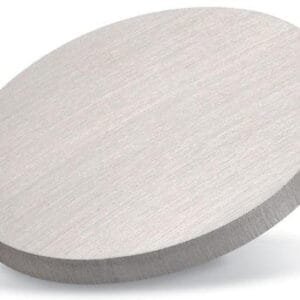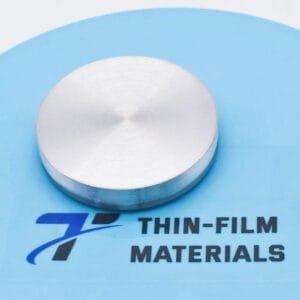Tin Monoxide (SnO) Sputtering Target Description
Tin Monoxide (SnO) sputtering targets offered by TFM are high-performance oxide ceramic materials composed of tin (Sn) and oxygen (O) in a 1:1 atomic ratio. These targets are specifically engineered for use in thin film deposition techniques, particularly in applications requiring p-type semiconducting properties.
Tin, also known by its Latin name “stannum,” is a metallic element with a rich history dating back to ancient civilizations around 3500 BC. The symbol “Sn” originates from its Latin root. Tin has an atomic number of 50, is found in Period 5, Group 14 of the periodic table, and is classified under the p-block. It has a relative atomic mass of 118.710(7) Dalton.
Related Product: Tin Sputtering Target
Oxygen, a vital element for life and numerous chemical processes, carries the symbol “O” and was discovered in the 18th century by Carl Wilhelm Scheele. It is positioned in Period 2, Group 16 of the periodic table and is part of the p-block. Its atomic number is 8, and the relative atomic mass is 15.9994(3) Dalton.
Tin Monoxide Sputtering Target Specification
| Property | Value |
|---|---|
| Compound Formula | SnO |
| Molecular Weight | 134.71 g/mol |
| Appearance | Black or bluish-black solid |
| Melting Point | ~1080 °C |
| Density | ~6.45 g/cm³ |
| Available Sizes | Dia.: 1.0″, 2.0″, 3.0″, 4.0″, 5.0″, 6.0″ Thick: 0.125″, 0.250″ |
Tin Monoxide Sputtering Target Handling Notes
Elastomer bonding is recommended for SnO sputtering targets due to their ceramic nature and susceptibility to cracking or delamination under direct thermal stress.
SnO exhibits moderate thermal instability and can oxidize to SnO₂ or reduce to Sn metal under certain conditions; proper process control is essential during deposition.
Tin Monoxide Sputtering Target Packaging
TFM ensures all tin monoxide sputtering targets are carefully labeled and securely packaged to prevent any contamination or mechanical damage during transit. Our packaging protocols are designed to preserve product integrity and facilitate safe handling upon delivery.
Get Contact
TFM supplies SnO sputtering targets in various dimensions, purities, and configurations tailored for CVD, PVD, and other vacuum deposition systems. Our materials are developed with tight control over purity, grain structure, and mechanical properties, making them suitable for research and industrial-scale thin film production.
Contact Us today for a quote or additional information on availability and custom compositions.





Reviews
There are no reviews yet.